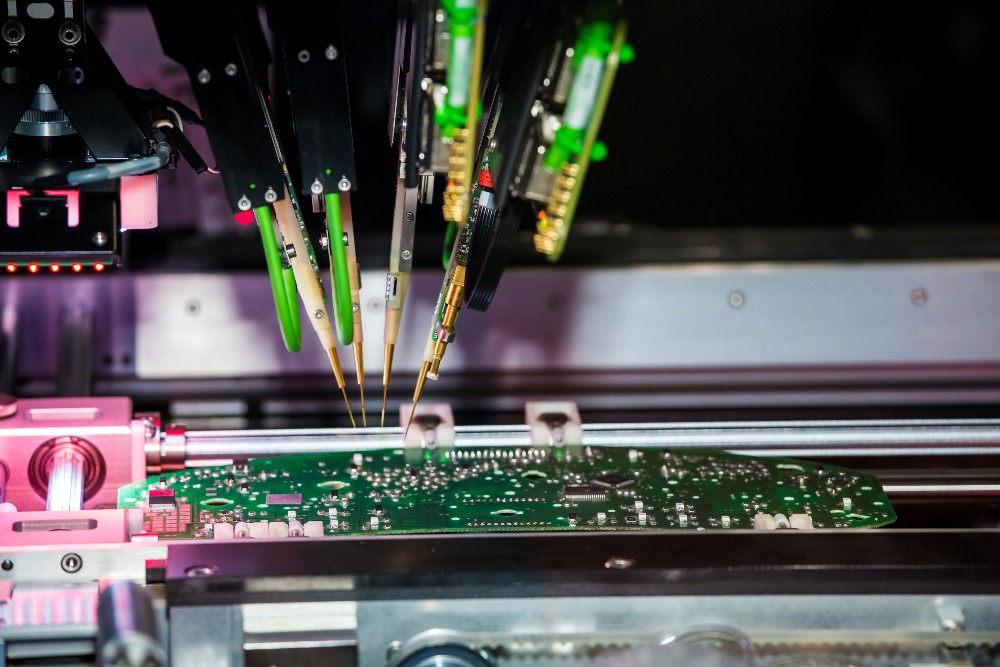Testing printed circuit boards is an essential step in the printed circuit board manufacturing process.
Without testing PCBs, there is an enormous risk, and it’s likely your product will run into several errors after hitting the market. Electronics that malfunction can even cause harm to consumers.
There are several testing methods your printed circuit board manufacturer should consider in the assembly process.
In-Circuit Testing
In-circuit testing (ICT) is a fully automated test. It’s also known as bed-of-nails testing because the method resembles a bed of nails.
In ICT, the PCB is pressed down on a board of probes, and needles come up to test the circuit at predesigned access points. A certain amount of pressure is applied to see if the connections are working correctly.
In-circuit testing is the most thorough of the tests and takes the most time. Because of these factors, this test comes at a high price point.
For ICT, the cost can reach more than $10,000 depending on your printed circuit board’s size and functionality.
In-circuit testing can also test your board’s tensile strength to make sure the soldering is strong and intact.
If your board isn’t designed with manufacturing in mind, you won’t be able to perform this test. This test is meant to be used for mature products with minimal errors.
Automated Optical Inspection
Automated optical inspection (AOI) aims to see how well the PCB design matches the original schematics.
Cameras (a single 2D camera or two 3D cameras) are used to take photos of the printed circuit board, and then the board is compared to the schematic.
If a board or part doesn’t match the original plans, the board is flagged and sent to review by a technician.
Automated optical inspections help catch errors before mass production but shouldn’t be used as your prime testing method.
It’s best to combine AOI with fly-probe, in-circuit, or functional testing.
Functional Testing
Functional testing is usually one of the last tests performed on a printed circuit board before it is shipped. It is to make sure the product powers up without any errors.
The assembly is reviewed in its entirety rather than just the circuits themselves.
Functional testing is tedious and not ideal if you are looking to get your products out as soon as possible. It is a long-term investment to save time and money in the future.
The functional test includes x-ray inspection, micro-sectioning review, contamination testing, solderability testing, peel testing, and time-domain reflector testing.

Flying Probe Testing
Flying probe testing is a popular method and is on the less expensive side — but it does not include powering up your printed circuit board like other methods.
Instead, flying probe tests review opens, diode issues, shorts, inductance, resistance, and capacitance.
Flying probe testing uses machine-controlled probes to read the components on your board. The process is automated and has the probes go over the x-y grid of your PCB.
This test helps identify what design changes need to happen to maximize the size efficiency of your PCB.
Burn-In Testing
Burn-in testing finds failures early on in the manufacturing and determines the load capacity.
The process is intense and parts tested can be damaged during burn-in testing.
The test shoots a current through your electronics at their highest possible power level. The process is done for as short as 48 hours to as long as 168 hours. If the printed circuit board fails the test, it is known as “infant mortality.”
Although burn-in testing isn’t necessary for every product, it can help prevent customers from encountering dangerous failures when using them.
It’s important to note that this type of testing can shorten the lifespan of your products. To avoid affecting the lifespan, have your electronics tested for a shorter amount of time.
Make Sure Your PCB Manufacturer Offers Testing
Whatever testing method you choose, make sure the PCB manufacturer you partner with offers various testing options to help prevent future disasters with your product.
Implementing testing in your printed circuit board design won’t just protect your customers — it’ll also save time and money.
Are you starting the hunt for an electronics manufacturer? Here are some things to look for during the vetting process.
